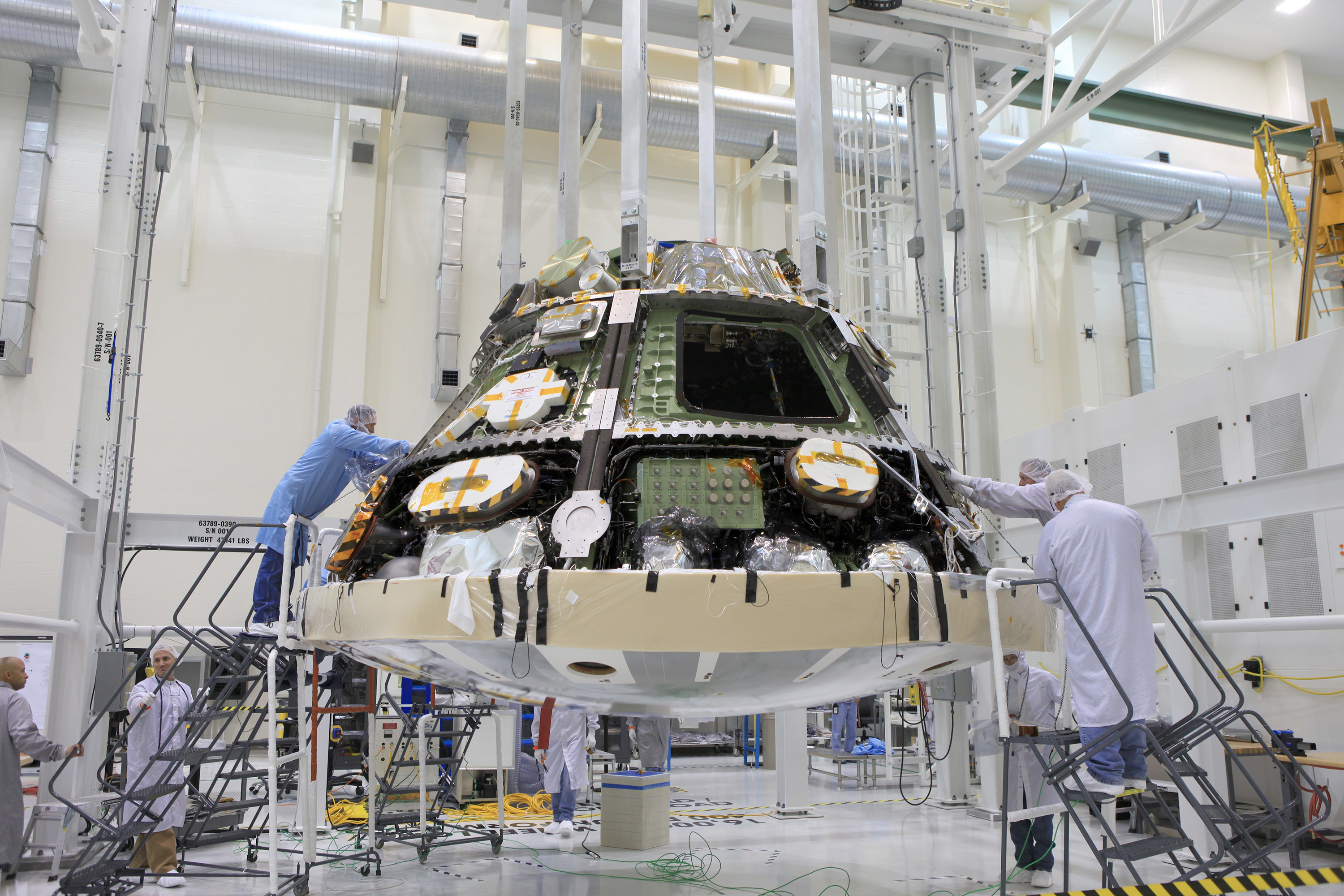
Engineers from NASA and Lockheed Martin working on the agency’s Orion Multi-Purpose Crew Module at the Kennedy Space Center’s Operations and Checkout building in Florida have installed the crucial one-of-a-kind heat shield, the largest of its kind ever built, onto the spacecraft to protect the uncrewed Orion from succumbing to the intense 4,000-degree inferno of re-entry as it plummets through the Earth’s atmosphere at over 20,000 mph during Exploration Flight Test-1 (EFT-1) next December.
“It is extremely exciting to see the heat shield in place, ready to do its job,” said Mark Geyer, Orion Program manager at NASA’s Johnson Space Center in Houston. “The heat shield is such a critical piece, not just for this mission, but for our plans to send humans into deep space.”
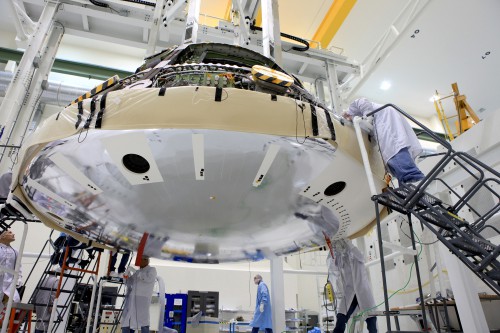
The heat shield is outfitted with over 200 instrumentation sensors to provide engineers with data about the heat shield’s ability to protect Orion and its crews on NASA’s future crewed deep-space missions on the agency’s gigantic Space Launch System (SLS). Data gathered during December’s unmanned orbital Orion flight test will inform decisions about design improvements on the heat shield (and other Orion systems) and authenticate existing computer models and new approaches to space systems design and development—a process critical to reducing overall risks and costs of future Orion missions.
Lockheed Martin, the prime contractor for NASA’s Orion Multi-Purpose Crew Vehicle, manufactured the titanium skeleton and carbon-fiber skin that give the heat shield its shape and will provide structural support during landing. The spacecraft was then shipped to Textron Defense Systems near Boston, where the company installed a fiberglass-phenolic honeycomb structure on the heat shield’s carbon-fiber skin before filling each of the honeycomb’s 320,000 cells with Avcoat—a specific ablative heat shield material. Textron then X-rayed and sanded each of the 320,000 cells to match Orion’s design specifications.
The Avcoat will wear away as it heats up during Orion’s violent re-entry into the atmosphere next fall, preventing heat from being transferred to the rest of the capsule and helping the spacecraft to survive its intense fall back to Earth. The heat shield material has already been subjected to arc-jet testing at both NASA’s Ames Research Center in California and NASA’s Johnson Space Center in Houston—both before and during its manufacture. Those tests simulate the heating conditions that a returning Orion will experience, and Orion will face conditions that will bring it through the atmosphere faster than any spacecraft in the last 40 years.
“Many people across the country have poured a tremendous amount of hard work into building this heat shield,” said Orion Program Manager Mark Geyer. “Their efforts are a critical part of helping us understand what it takes to bring a human-rated spacecraft back safely from deep space.”
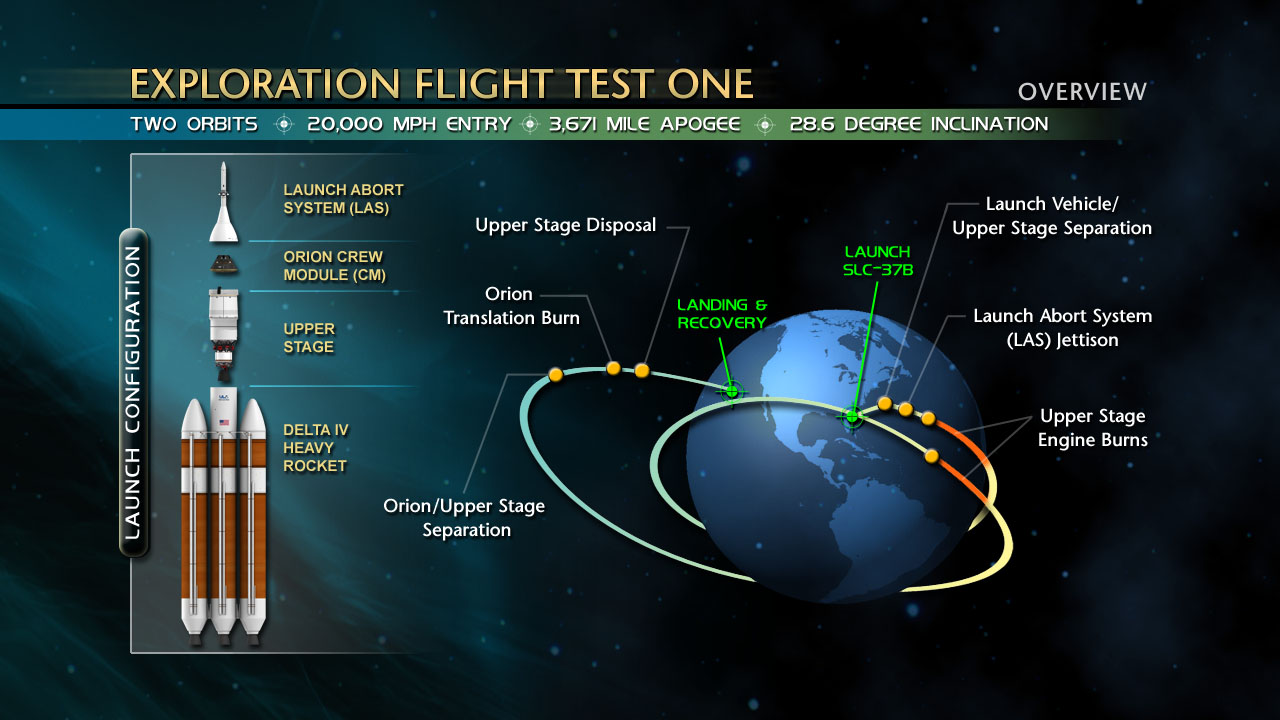
Orion’s first flight this coming December is a crucial step toward development of a crewed version for next decade, one which NASA intends to use for deep-space human exploration which leaves low-Earth orbit activities to commercial companies such as SpaceX and Orbital Sciences Corp. When the time comes at the end of the year, Orion will fly atop a mammoth United Launch Alliance Delta-IV Heavy rocket from Cape Canaveral Air Force Station Space Launch Complex-37B in Florida, just a few miles away from where the crewed version will launch in the coming years.
The powerful 24-story-tall launch vehicle will send Orion to orbit the Earth twice while remaining attached to the upper stage of the Delta-IV. After the first orbit, the vehicle will perform a burn to reach an altitude of more than 3,600 miles—15 times higher than the orbit of the International Space Station and 10 times higher than any human-rated spacecraft has been since 1972, when the crew of Apollo 17 visited the Moon. Orion will then detach from the Delta-IV upper stage and re-enter the Earth’s atmosphere at more than 20,000 mph—nearly 5,000 mph faster than the space shuttle—before parachuting gently into the Pacific Ocean off the west coast United States.
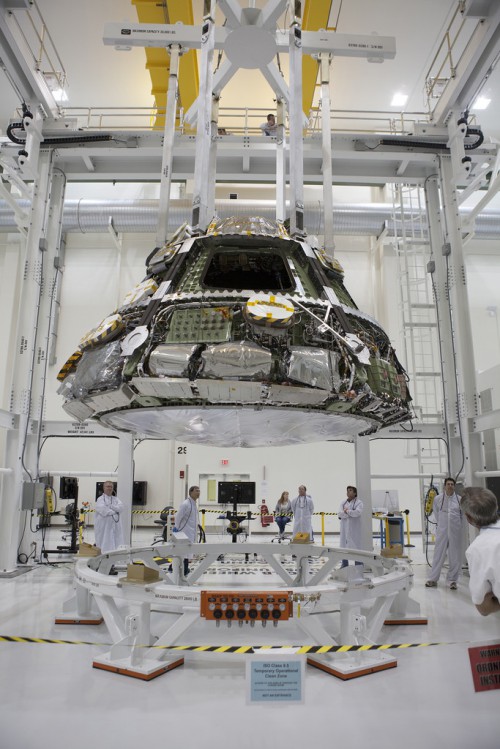
Orion is being designed to be reusable for up to 10 flights, capable of carrying four to six astronauts on missions to destinations deeper into space than any human spaceflight mission has ever been. The EFT-1 test flight will be conducted by Lockheed-Martin Space Systems under a NASA contract, serving to check the majority of Orion’s systems and provide teams on Earth with priceless experience and testing that can only be gained from an actual space flight. Test data from the unmanned flight will be used for additional design and development of the capsule, which will ultimately fly a fully operational crewed mission beyond LEO after 2020.
“There are people coast to coast building and developing Orion. Just as this test will check how it all works together in space, it already has pulled that team together on the ground,” adds Geyer. “Their diligence, dedication, and focus have been tremendous, they have truly excelled.”
The spacecraft, at first glance, resembles the Apollo Command and Service Modules—Orion’s CSM and CM are based on those vehicles. That, however, is where many of the similarities end. Orion is Apollo on steroids: Its rocket launcher (SLS) is bigger and more powerful than Apollo’s Saturn-V, and Orion’s Command Module (CM) is larger than Apollo’s (2.5 times the volume) and can support a larger crew for a longer time. The Service Module (SM) will provide additional space to mount cargo and experiments in addition to providing power and fuel to the spacecraft as well as storing oxygen and water. Orion will benefit from advances derived from the space shuttle program, featuring a “glass cockpit” and a NASA docking system similar to that which was used by the shuttle fleet. Life support, propulsion, thermal protection, and avionics systems will be upgradeable over time as new technologies become available.
After the EFT-1 test flight in 2014, Orion will be put through its first integrated launch in 2017 on the first flight of NASA’s new Space Launch System (SLS) heavy-lift rocket, the launch vehicle chosen to replace the agency’s now retired space shuttle fleet. The mission, Exploration Mission 1 (EM-1), will put the entire integrated system into action, sending Orion more than 40,000 miles beyond the Moon to a deep retrograde orbit where an asteroid could be relocated as early as 2021. Orion will also serve as a backup spacecraft for LEO missions to and from the ISS.
BELOW: Photos of Orion heat shield installation operations, courtesy of NASA / Dimitri Gerondidakis and Daniel Casper
Want to keep up-to-date with all things space? Be sure to “Like” AmericaSpace on Facebook and follow us on Twitter: @AmericaSpace
Missions » SLS » EFT-1 »




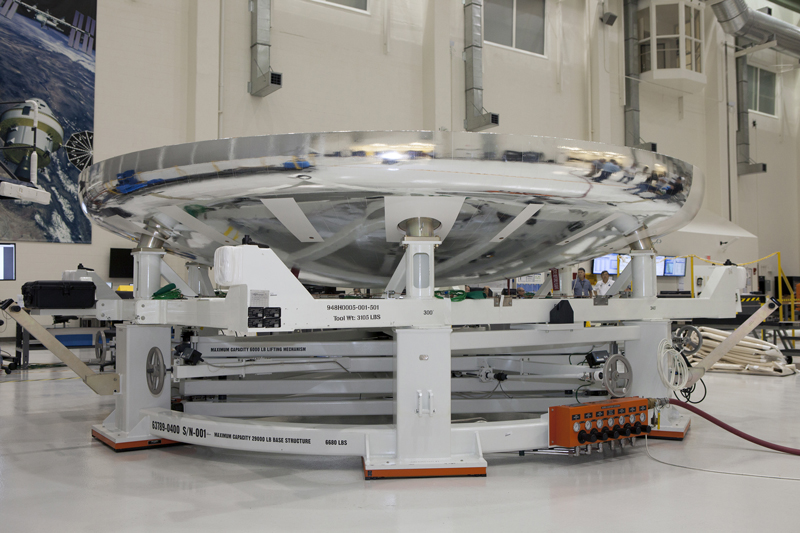


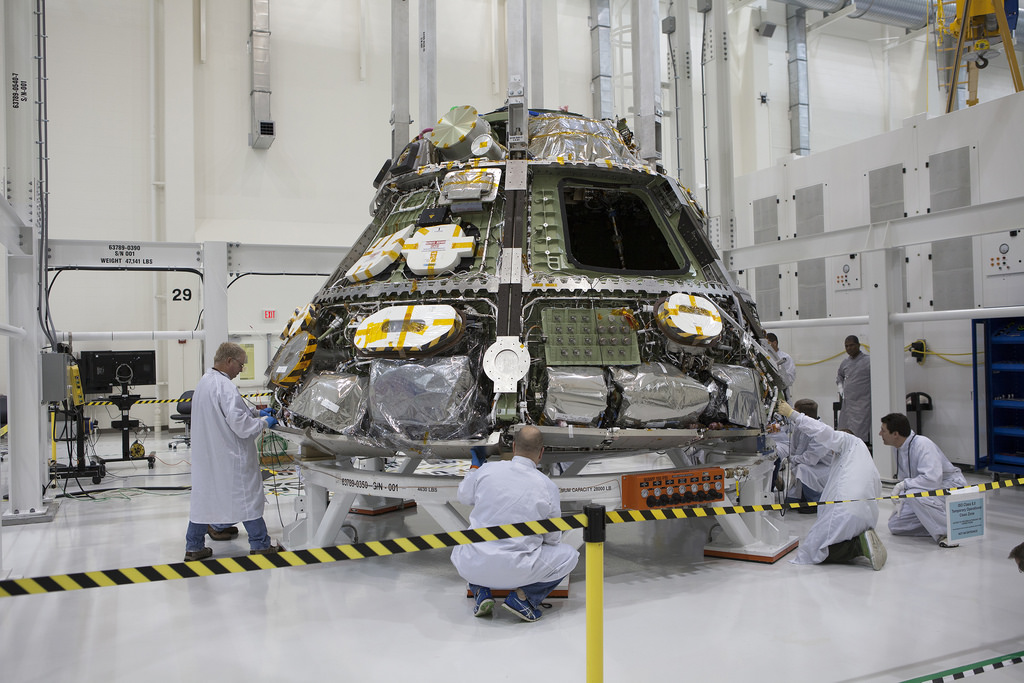
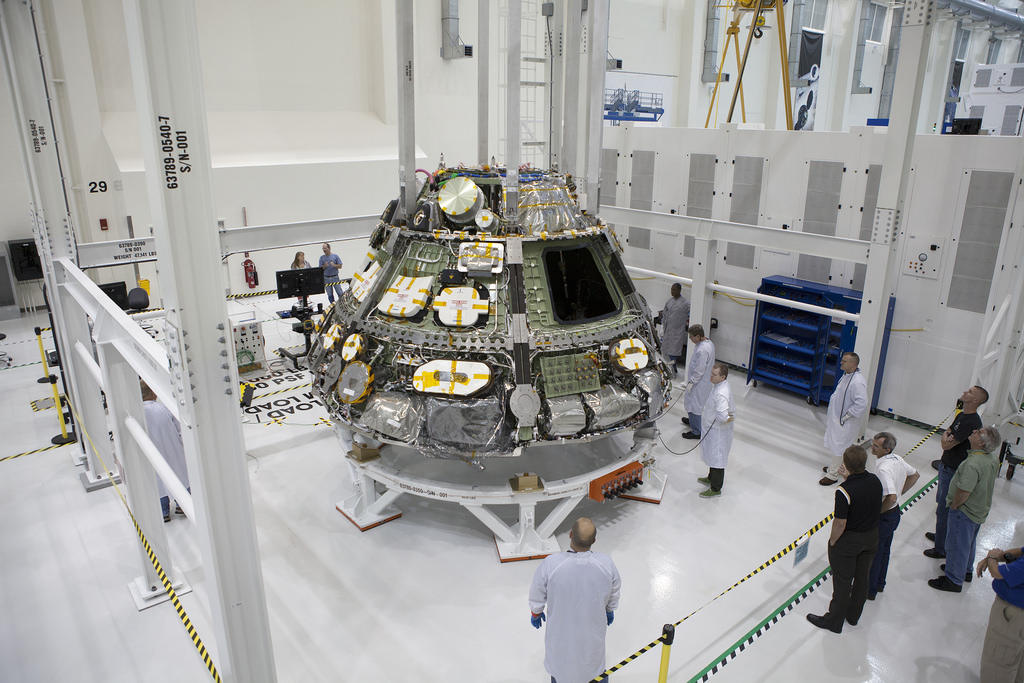
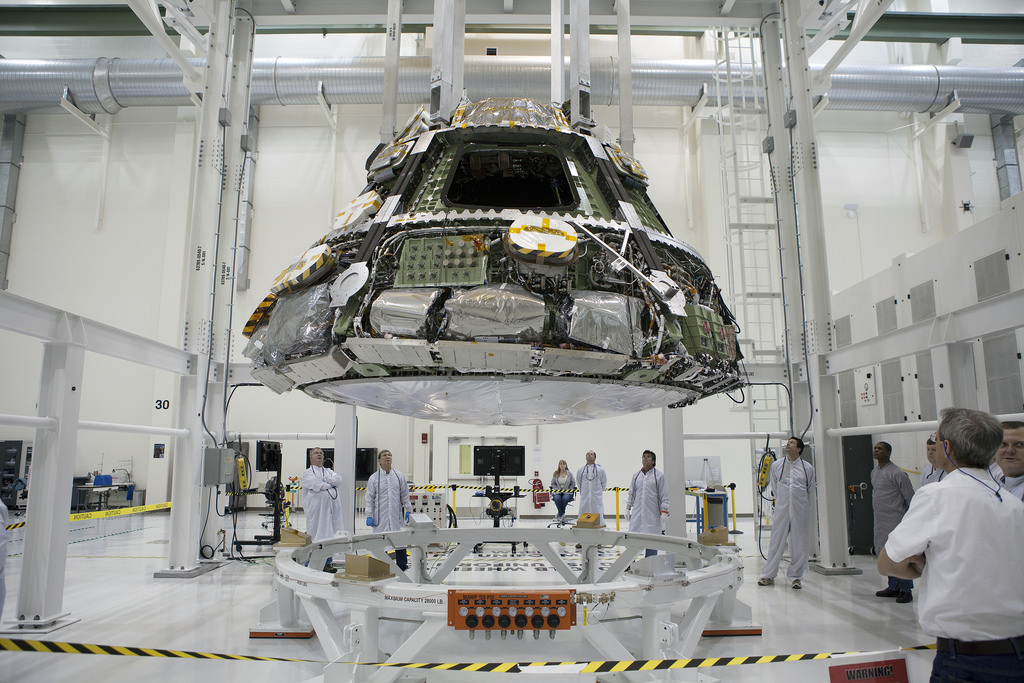
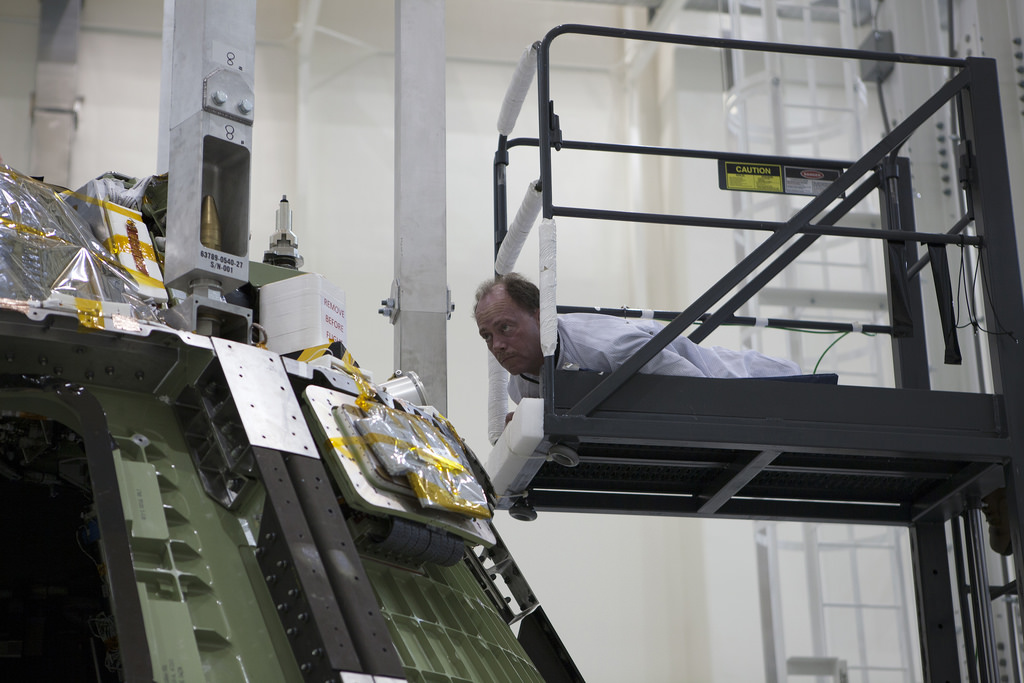
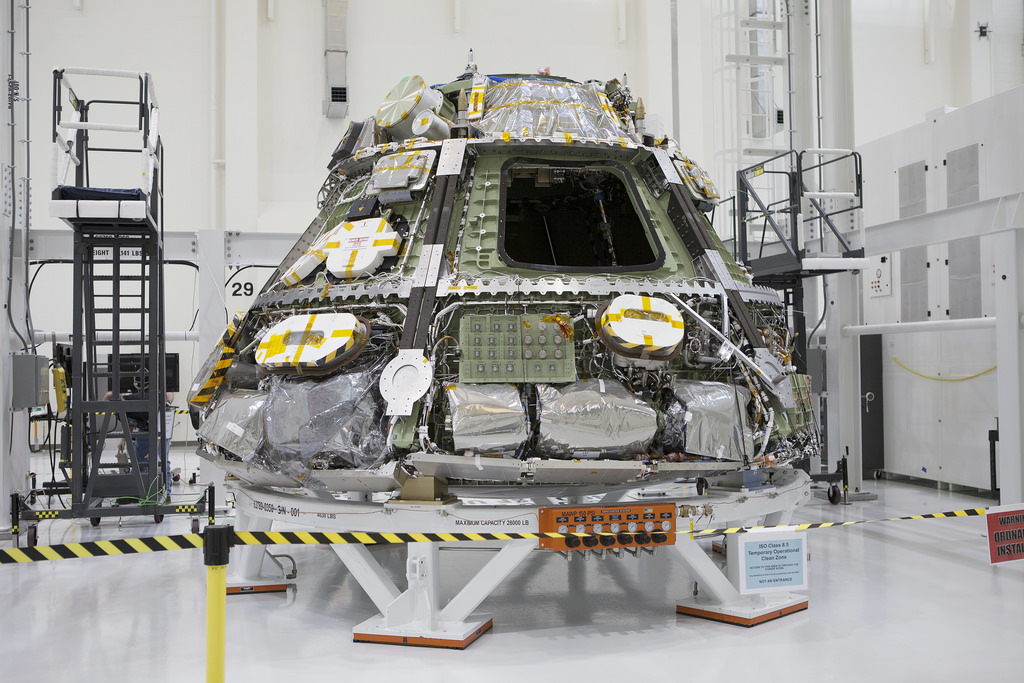
Orion is both too big (mass) and too small (volume.) It’s already obsolete before it’s first launch.
Dragon + Sundancer is both bigger and lighter and together could be launched on a single F9.
For the price of one Orion you could launch several Sundancer + Dragon combinations.
Government’s role should be a contracting office to commercial vendors.
They tried inventing airplanes. Remember how that turned out?